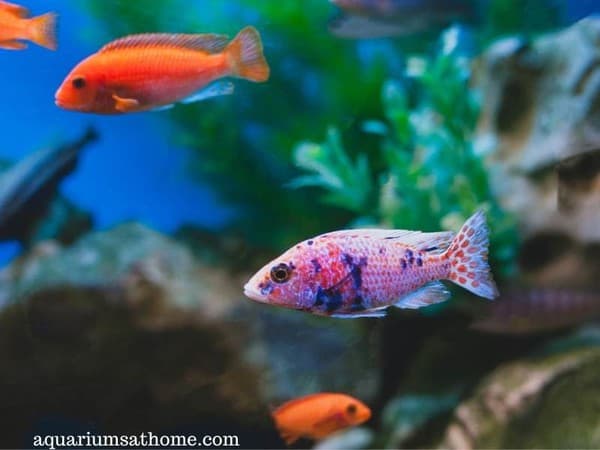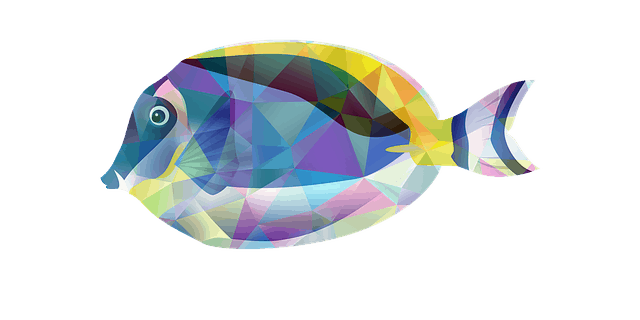As an aquarium hobbyist, you probably have both male and female fish in your tank. Perhaps you’ve wondered what each sex is called? After all, most aquatic creatures are given a designation in terms of their gender – for example, a male whale is called a ‘bull’ while a female is called a ‘cow’. Well, I have the answer for you below:
Regarding fish, females don’t have a specific name or designation, nor do males. Both are simply referred to as ‘fish.’ Pregnant females are called ‘livebearers’ or ‘egg-bearers’ based on how they spawn. There are certain species of fish that can change gender for the purpose of reproduction and are called hermaphrodites.
Now that you know female fish are just that, ‘fish’, let’s take a closer look at this topic. In this article, I’ll explain what a pregnant fish is called, what a hermaphroditic fish is, and how to physically differentiate between male and female fish. I’ll also list examples of both livebearer and egg-bearer fish and how to breed each successfully. I’ll even give suggestions for female fish names based on size and color!
So, if you want to learn more about fish (females, in particular), their physical differences based on gender, and their ability to spontaneously change sex, then please continue reading…
What is a Pregnant Fish Called?
Pregnant fish are often referred to as ‘livebearers’ if they give birth to living fry (baby fish). Livebearers keep their eggs inside the body until offspring are ready to be born – alive and free-swimming mini versions of their parents. Female fish that lay eggs which, in turn, are fertilized by males and later hatch into fry are called ‘egg-bearers.’
Egg-bearers can also be broken down into subcategories, including ‘egg buriers’ (lay eggs and bury them under the substrate), ‘egg depositors’ (lay eggs in one spot only), ‘egg scatterers’ (lay sticky eggs in various places such as gravel, plants, and rocks), and mouthbrooders’ (fertilized eggs are collected and carried in the mouth until they hatch).
What are Examples of Livebearer Aquarium Fish?
There are many species of livebearer fish found in captivity. Fresh and brackish water aquarium fish are the most common including endlers, guppies, mollies, platies, and swordtails. To breed livebearers, you need at least 1 male and 3 females in the same tank as well as slightly warmer than usual environment. The ideal water will depend on the type of fish you have.
What are Examples of Egg-bearing Aquarium Fish?
There are 4 categories of egg-bearing fish, though only 3 are commonly found in captivity. These include the following examples:
- Egg buriers – rare and endangered species in the wild, not common to aquarium fish.
- Egg depositors – clownfish, cory catfish, dwarf cichlids, killifish, and rainbow fish.
- Egg scatterers – barbs, cardinal tetras, danios, rasboras, and goldfish.
- Mouthbrooders – freshwater cichlids, betas, cardinalfish, gobies, and blennies.
To successfully breed egg-bearers, you must first ensure the environment is free of predatory or carnivorous fish. You should also add extra plants, rocks, and decorations to the tank. These not only provide cover but also a place for eggs to be deposited or scattered. Ideal water conditions are ‘a must’ and dependent on the species of fish you intend to breed.

What is a Hermaphroditic Fish?
Hermaphroditic fish are those that have both male and female reproductive organs. As they mature, these fish develop both testes and ovaries which are then used for cross-fertilization during spawning. This trait is often explained as the ability to spontaneously change gender or sex for the purpose of reproduction or survival.
There are many species of fish (approximately 500, in fact) that are known to be hermaphroditic. Clownfish, damselfish, gobies, parrotfish, and wrasse are all examples of saltwater aquarium fish that can change gender. It’s more common for marine or reef fish rather than freshwater fish to change gender in a captive aquatic environment.
What are the Differences Between Male and Female Fish?
Though you may not realize it, there are physical distinctions between male and female fish. To tell the difference, look for the following 10 characteristics:
- Males are usually slimmer- and larger-bodied than females.
- Females are often more vibrantly colored.
- Males have longer, more flowing dorsal fins than females.
- Males have visible egg-shaped markings on their anal fins called ‘egg spots.’
- Females, when pregnant, appear rounder and fuller in the abdominal region.
- Males often have thick, bumpy foreheads.
- Males tend to grow bristles or bumps during the mating season.
- Females usually have a smoother front fin as opposed to males.
- Males often exhibit more aggressive behavior and will ‘chase’ females when its time to mate.
- Males have a pointed tube extending from the vent that’s used to fertilize eggs.
What Should I Name My Female Fish?
When it comes to naming female fish, the options are endless. That said, the ‘top 10’ most popular include the following:
- Angel – ideal for angelfish, bettas, or any species white in color or with flowing fins.
- Ariel – great for red and green fish (like the colors of Ariel the Mermaid from the Disney cartoon, The Little Mermaid).
- Coral – ideal for marine or reef fish as well as any species of pinkish orange hue.
- Crystal – great for iridescent fish or those with multi-colored fins.
- Dory – perfect for blue tangs, like the beloved Disney character.
- Goldie – great for goldfish or fish that are golden in color.
- Jewel – perfect for any fish with gemstone coloring – ruby or red, emerald green, sapphire blue, amethyst purple, etc.
- Penny – great for fish with metallic coloring such as bronze or copper.
- Minnie – ideal for smaller fish
- Nessie – perfect for larger fish (like the great loch ness monster)
Conclusion
To sum things up, female fish don’t have a specific name or designation – neither do males, for that matter. They’re simply called ‘fish’ with pregnant females falling into subcategory names based on how they spawn/reproduce. There are some species of fish that can spontaneously change sex in which case, they’re referred to as hermaphrodites.
I trust this article has provided you with the information you seek regarding fish and their gender designations. Thanks for reading and best of luck with your aquarium hobby.
Related Posts
How to Tell if Your Goldfish is a Boy or a Girl?
How Do I know if My Fish are Happy?
Can Fish Hear You When You Talk to Them?






